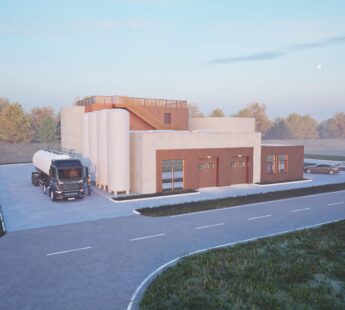News
Water management
New method for cleaning lakes shows promising results


The problem of oxygen depletion and algae is found in just over 75 per cent of all Danish and European lakes—mainly due to the unfortunate habit in the past of discharging wastewater with a high phosphorus content directly into the lakes. The sediment at the bottom of the lakes therefore no longer contains enough oxygen for bacteria to break down dead plants, fish, and algae, thus making the lakes often appear both murky and smelly.
In recent years, many different ways of oxygenating the bottom of lakes have been trialled. However, according to Professor Stefan Trapp from DTU Environment, who came up with the idea for the new promising method, these initiatives have generally been both expensive and have had only limited effect. “Our new method is both simple and inexpensive. We’ve tested it first in the laboratory and subsequently in a pilot project in Lake Søllerød, and with very promising results—in the form of a reduction of the phosphorus content in the deepest water strata of up to 94 per cent,” says Stefan Trapp.
Phosphorus is encapsulated
The idea of using electrodes for oxygenating the lakebed came to Stefan Trapp during a lecture being given by a colleague who uses the method in a completely different field.
“In practice, the method consists of lowering two steel meshes into the top and bottom of the lake, respectively. The two meshes are connected by a wire and form a kind of electric battery. As they break down dead plants and fish, the bacteria at the bottom of the lake release electrons that are caught by the steel mesh and travel to the surface mesh, where oxygen is present and can absorb the electrons,” explains Karl Haxthausen, DTU Environment, who has been responsible for the practical part of the work. "In this way, the bacteria can break down the dead organic matter as if oxygen was present. And in fact, the whole process takes place without producing unwanted methane. The removal of electrons also changes the chemistry at the bottom of the lake, causing the phosphorus to bind to the sediment and thus resulting in its immobilization,” says Karl Haxthausen.
Testing an entire lake
This encapsulation of the phosphorus is a significant result of the new method, since there is more phosphorus in a single centimetre of the sediment on the bottom than in 10-metre deep water. The pilot project with the two steel meshes in Lake Søllerød started in summer 2019 and ends now.
“Our results are so promising that we would like to conduct a large demonstration trial, where we not only use a couple of small 4 x 4-metre meshes, but instead test our method on an entire lake—for example an area of 100 x 100 metres,” says Stefan Trapp. If the outcome of the future project also proves to be satisfactory, there is no doubt that the new approach could play a key role in lake remediation in the future. In addition, it will be interesting to use it in marine areas experiencing similar problems with oxygen depletion.
Facts
The scientific article containing results from the trials:
“Novel method to immobilize phosphate in lakes using sediment microbial fuel cells”, Water Research, April 2021. https://www.sciencedirect.com/science/article/pii/S0043135421003067
Photo: Mikal Schlosser
You should consider reading
Perspective
Sector coupling
+9
New white paper: Unlocking the potential of renewable energy through sector coupling
23 October 2024solutions
Climate change adaptation
+4















